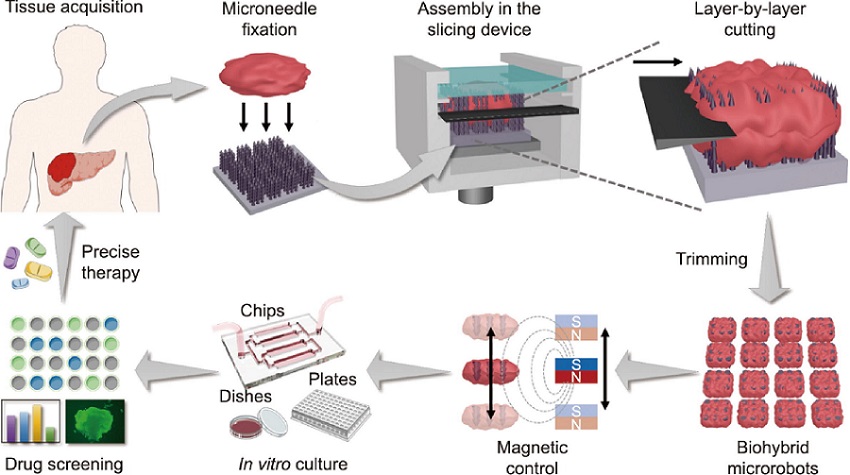Magnetic Microneedle Array Robots to Revolutionize Tissue Slicing and Cultivation
Posted on 01 Aug 2024
The cultivation of patient-derived tissues in vitro is essential for accurate diagnosis, targeted treatments, and advancements in tissue engineering. However, traditional methods of tissue slicing and cultivation often do not meet the clinical needs. Addressing this gap, a groundbreaking method has been developed that incorporates a controllable histotomy technique using hierarchical magnetic microneedle array robots. This innovation not only enhances tissue analysis capabilities but also paves the way for personalized medicine and the development of more effective therapies. As this technology evolves, it is anticipated to significantly impact biomedical research and clinical practices.
A team from Nanjing Drum Tower Hospital (Nanjing, China) has pioneered this innovative tissue slicing and cultivation method that promises to transform how primary tissues are managed in medical settings. Described in a research article published in Engineering, the method employs a three-dimensional printed slicing device with a mortise-tenon structure and a pagoda-shaped microneedle array scaffold loaded with magnetic particles. The multilayered structure of the microneedles ensures stable fixation of tissue samples during slicing, preventing slippage. Additionally, the encapsulated magnetic microneedle fragments convert tissue sections into biohybrid microrobots that can be magnetically manipulated for separation, transport, and dynamic culture.

This method was tested with primary pancreatic cancer tissues, which were segmented into small sections and cultured in multilayered microfluidic chips for comprehensive drug screening. The outcomes are promising for clinical application, marking a substantial advancement in the field of precision medicine. The research article also outlines potential enhancements, such as automating the tissue sectioning process and increasing the throughput of the microtomy device. Going forward, the researchers see potential applications of this technology extending beyond cancer to include various types of patient-derived tissues, potentially revolutionizing long-term tissue cultivation and monitoring.
“The development of this controllable histotomy technique marks a significant advancement in the field of tissue engineering and drug screening,” said Jiaming Wu, the editor of Engineering. “By leveraging the capabilities of magnetic microneedle array robots, researchers have been able to create a more efficient and precise method for tissue manipulation and analysis.”
Related Links:
Nanjing Drum Tower Hospital













